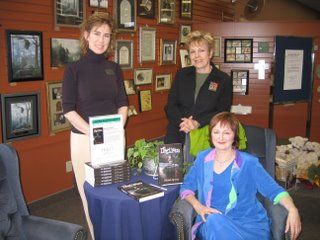Sylvia over at
theinquiry.ca has links to troubling articles about pedophile chic
here and
here.While the articles explore the ways that sex between men and boys, especially adolescent boys, is seen in some circles as not damaging to the victims and in some ways even beneficial, I'm not sure I agree with the authors that sex with girls is still taboo. Maybe in polite, literary and glossy magazine circles it still is, but go a little down market and girls are fair game.
Judging from the kinds of pornographic spam emails I've been getting, sex with teens and "teenies," incest porn and all kinds of other shocking things are being sent into mailboxes around the world. Since I have never visited a porn site and only look at some of the headers and titles because make a point of reporting these to
Cybertip.ca, I can assume that men who do visit these sites get even more of this stuff than I do. The sheer quantity of this kind of sick material indicates to me lots of internal barriers to this kind of degrading and disgusting behavior are coming down.
Why? Because people will start to think, hey, I'm not alone with these proclivities.
Maybe it's not "chic" to be misogynist and to degrade women, but the authors should maybe have listened to 50 Cent and some popular gangsta rappers to see that the exploitation of girls is hugely fashionable.
I recall years ago hearing from a forensic psychiatrist that about one fifth of the population has pedophilic tendencies though only a tiny proportion fall into the sadistic, violent category. With the help of this barrage of porn, how many people might be tipped into that category? And the fact that weak, sick people hate what they crave, and blame it for their weaknesses, is it surprising that the porn is becoming more brutal?
It seems odd that sexual liberation has resulted in more
literal slavery for women and children, both girls and boys.




